Switzerland
I understood everything about Switzerland within the first five minutes of landing in Geneva.
Imagine this. It’s half past one in the morning, the airport is empty, and even the lights are barely on. All the passengers have scattered in cars, and only a small group of five people has found a bus stop somewhere around the corner and patiently waits on the deserted road.
The schedule indicates that the bus departs at 00:33. It’s already 00:30 on the clock, and there’s no bus. It’s Saturday night to Sunday morning. The highway is completely deserted, and the bus stop is in an isolated location. There is no hope that transportation is still running.
And then, when it’s 00:32 on the clock, a bus appears from around the corner.
Switzerland operates like clockwork. It is one of the freest countries in the world, often cited as an incredible success in all areas.
See for yourself. Switzerland ranks second in the world in terms of economic freedom. The country strictly upholds the right to private property, taxes are among the lowest in Europe, and the state is decentralized, ranking first in the world in terms of modest expenditure.
In terms of salary, Switzerland ranks fourth in the world, surpassed only by Norway, the United Arab Emirates, and Luxembourg. Some of the happiest people in the world live in Switzerland, and it is evident not only from happiness rankings but also reflected on their faces. The world’s best healthcare system shows results: the average life expectancy in Switzerland exceeds 83 years.
And yet, in Geneva, bicycle wheels are still being stolen...
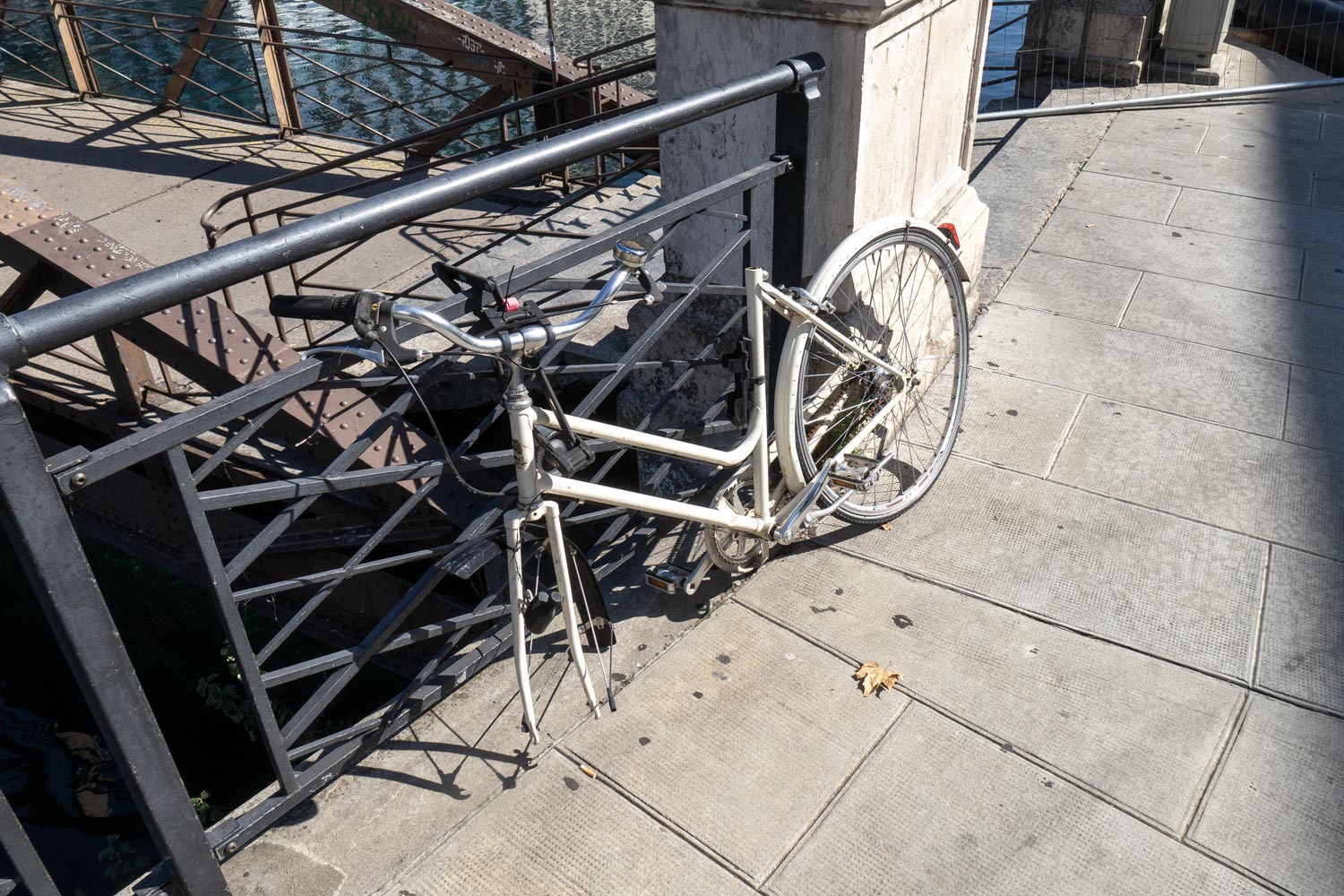
But I’m not going to sing praises about Switzerland the whole time. Writing about its wealth in 2023 is bad taste. Although Switzerland still remains a rather prosperous country, it has its own unique poverty and exorbitant housing prices, and the country’s main bank recently went bankrupt.
And yes, the famous Swiss neutrality has also remained on paper.
The myth about the capital of Switzerland
Let’s start with something simple.
The most well-known myth: supposedly Switzerland has no capital. This nonsense has been circulated for decades. Any travel guide talks about the “uniqueness” of Switzerland, and every blogger feels obligated to repeat and spread this falsehood to the next audience.
Usually, the city of Bern is referred to as the capital of Switzerland, but the fact is that it is not officially documented as such. From this, armchair lawyers conclude that Switzerland has no capital.
Dear friends! Following this logic, Paris, Lisbon, and London are also not capitals. None of the official documents of France, Portugal, and the United Kingdom officially record the capital of these countries, yet for some reason, only Switzerland attracts attention with this amusing fact.
Moreover, a reliable dictionary doesn’t mention anything about an official status when defining the word “capital.” By definition, a capital is simply a city where the country’s administration is located, and that’s it.
So, the capital of Switzerland is quite evident – it is the city of Bern.
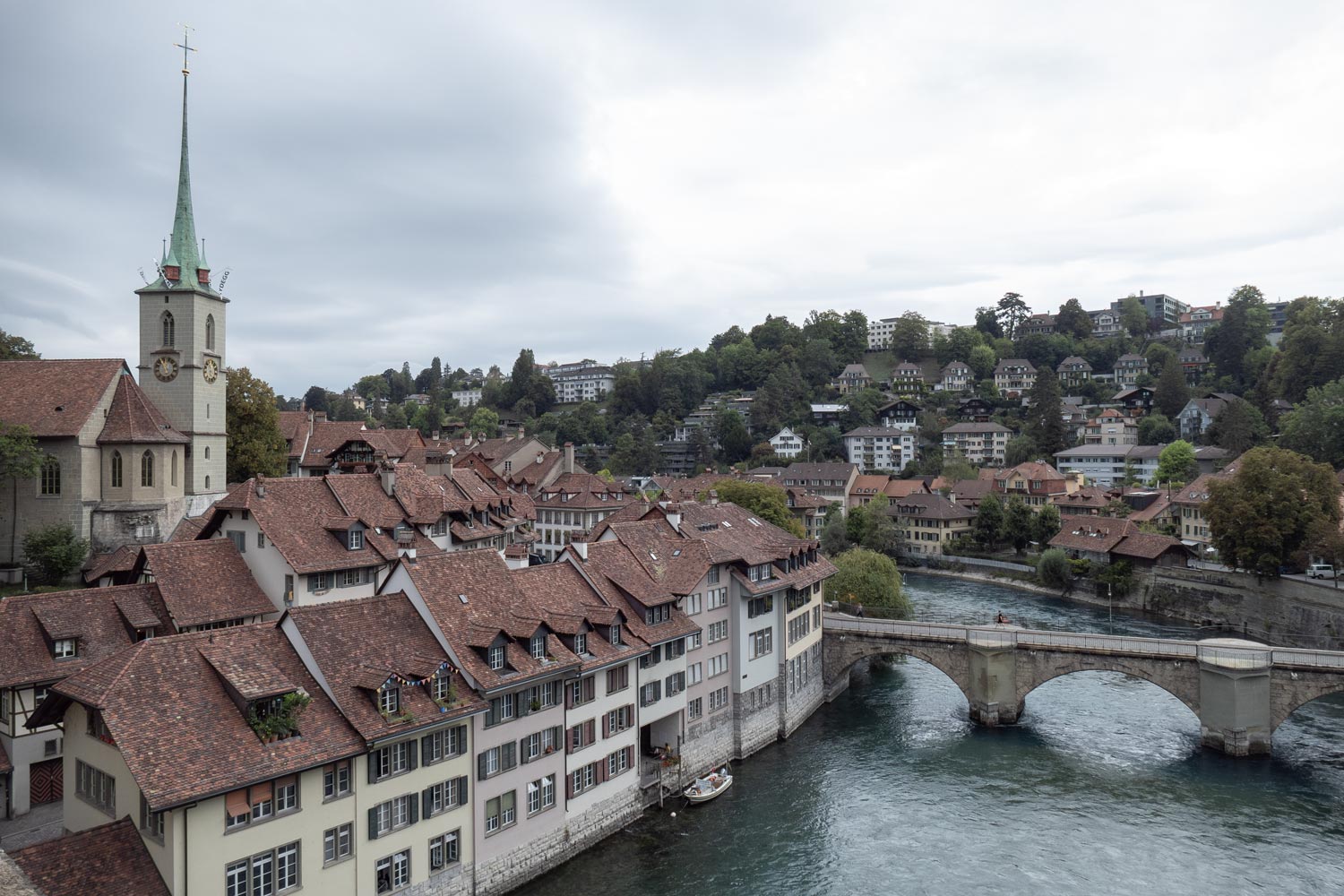
The myth about weapons
Switzerland is often referred to as a country “armed to the teeth.” According to bloggers’ stories, every Swiss citizen is almost obliged to have a firearm at home.
Of course, that’s not true. During military service, which is mandatory in Switzerland, weapons are indeed issued, and individuals are trained to use them. After completing their service, it is possible to purchase one’s service rifle and keep it, and half of the firearms in Switzerland are such service rifles.
Although back in 2007, Switzerland ranked second in the world in terms of firearms per capita, it now stands at 19th place. The gun laws in Switzerland are as strict as in the rest of Europe or in Russia. Carrying a pistol is not allowed, and everything else is not that significant.
The myth about independent cantons
Switzerland is divided into 26 states, which are called cantons.
Each canton has its own constitution and government, which are subordinate to the federal center in Bern but can enact certain laws and set different taxes. In general, the Swiss model of cantons is a typical federation, sharing many similarities with the United States.
Once upon a time, Switzerland was not just a federation, but a confederation. This term is used to describe the union of completely independent countries that may even have different currencies, not to mention armies and governments. Nowadays, there are hardly any confederations left, but a rough example could be the European Union.
The history of Switzerland began in 1291 when the first three cantons formed a military alliance against the Habsburg dynasty, which sought to control the trade routes in the Alps. Historians now refer to the union of the three cantons as the Swiss Confederation, although it did not have that name at the time, and the new state was part of the Holy Roman Empire.
After 60 years, new cantons joined Switzerland, including well-known ones like Zurich, Lucerne, and Bern.
At that time, these cantons were city-states: a term used to describe a small territory with a single city that operates like a small country. City-states often have low taxes and a thriving economy. Modern examples include Singapore and Monaco, while in the past, there were dozens of them in Europe: Italian cities like Venice, Florence, and Milan, as well as Russian cities like Pskov and Novgorod, are prominent examples of city-states and the most developed countries of the Middle Ages.
Many Swiss cantons, as befits city-states, were governed democratically through popular assemblies. In others, aristocracy ruled. Either way, Old Switzerland was one of the freest countries in Europe, situated at the crossroads of trade routes and surrounded by mountains. All this ensured prosperity for the country and protection from the wars that plagued Europe.
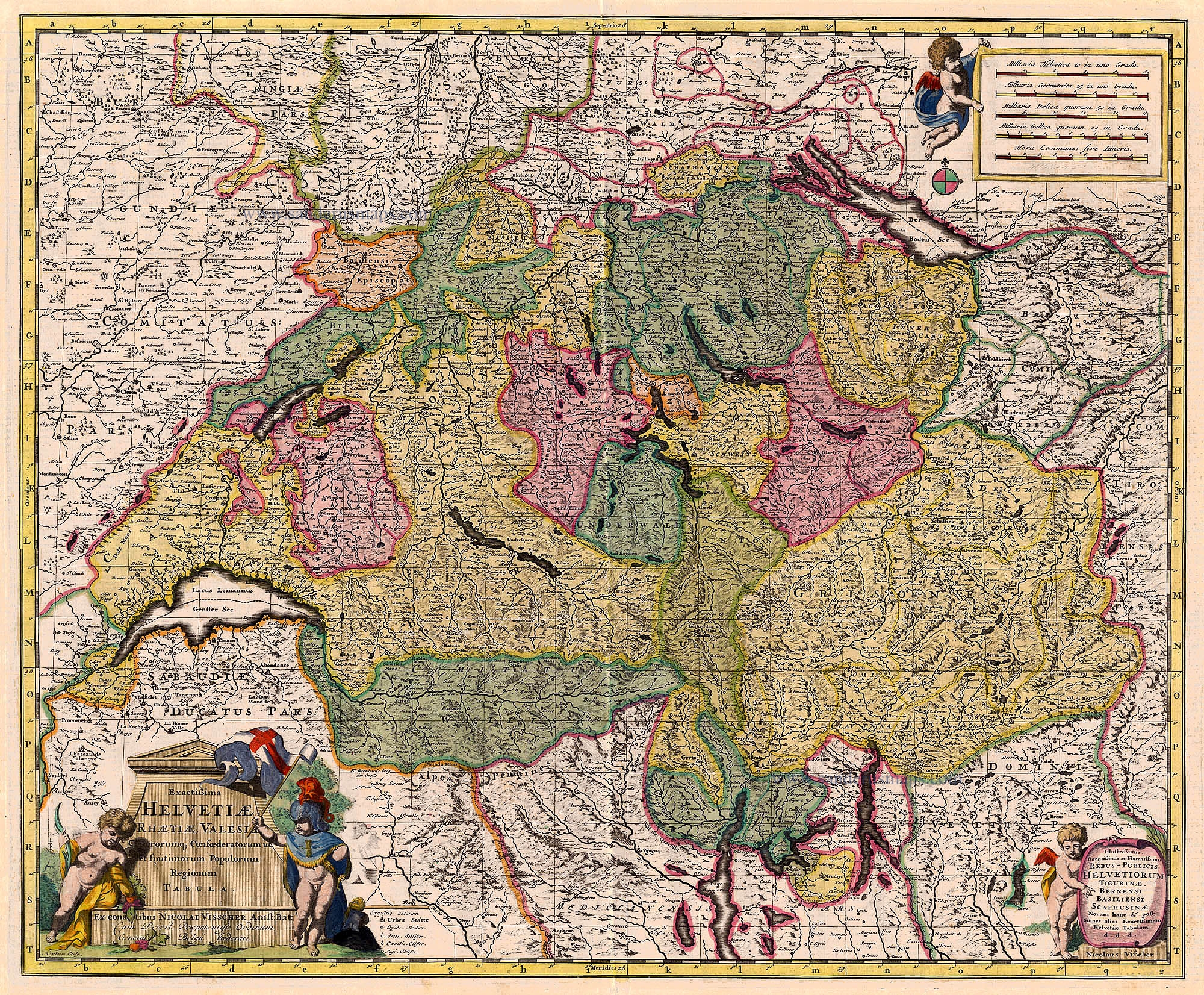
Each canton was highly independent and only joined forces with other cantons through military and trade agreements. The army, government, and even currencies varied among the cantons. Moreover, there was no central authority in the country.
The model of this state proved to be sustainable but not eternal. Gradually, the Swiss Confederation expanded with new cantons and allied territories. Over time, authoritarian rule emerged in the cities, which marginalized the rural areas. On the other hand, the Protestant Reformation and religious wars between Protestants and Catholics were taking place in Europe. Although Switzerland remained neutral, its economy was undermined by the reduction of trade with France and Spain. In 1653, a peasant uprising began, followed by a religious war between the cantons three years later.
The Swiss state then held its ground and successfully dealt with uprisings and rebellions until the end of the 18th century. However, eventually, the country fell victim to France, which, after the revolution, declared war on Austria and decided to conquer Switzerland along the way. The French army was incredibly powerful, and they managed to achieve this. Russia, which was allied with Austria, attempted to come to the aid of the perishing Switzerland.
These events include the mysterious campaign of Russian commander Alexander Suvorov, who fought in vain against the French forces in the Alps. In memory of these events, Switzerland carved a massive memorial to the Russian army in one of the rocks near the Saint Gotthard Pass.
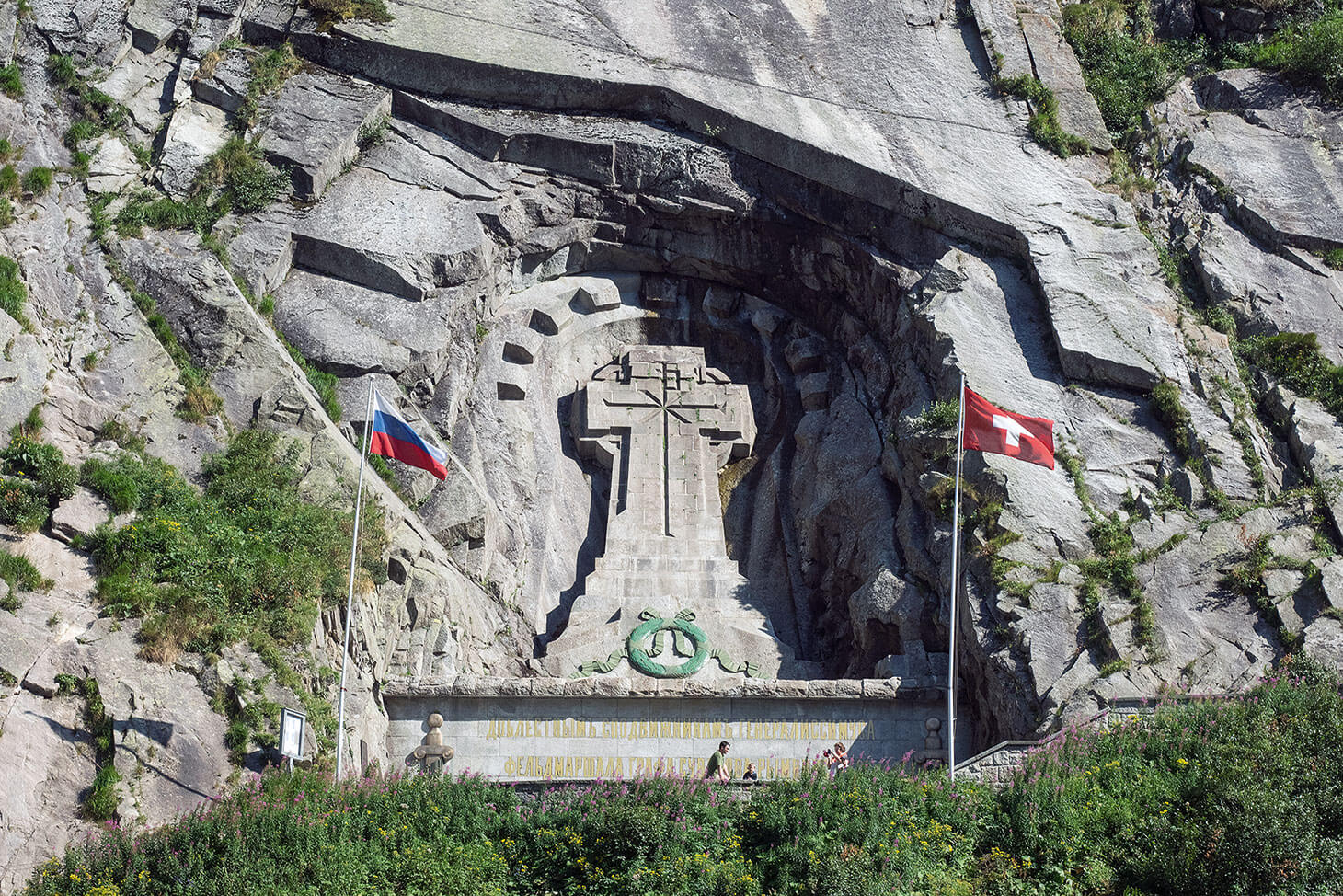
Despite all efforts, Switzerland could not withstand France. In place of the Swiss cantons, the French established the Helvetic Republic—an indivisible and unified country equipped with a copy of the French constitution.
The Helvetic Republic lasted only 5 years. Then Napoleon himself restored the independence of the cantons. Unfortunately, it didn’t last long. In 1848, Switzerland adopted a new constitution, this time based on the American model. This marked the establishment of federal authority, a unified judiciary, and a national currency—the Swiss franc. The first Swiss constitution even explicitly stated the capital of the country as the city of Bern. It was only removed during the 1999 reform.
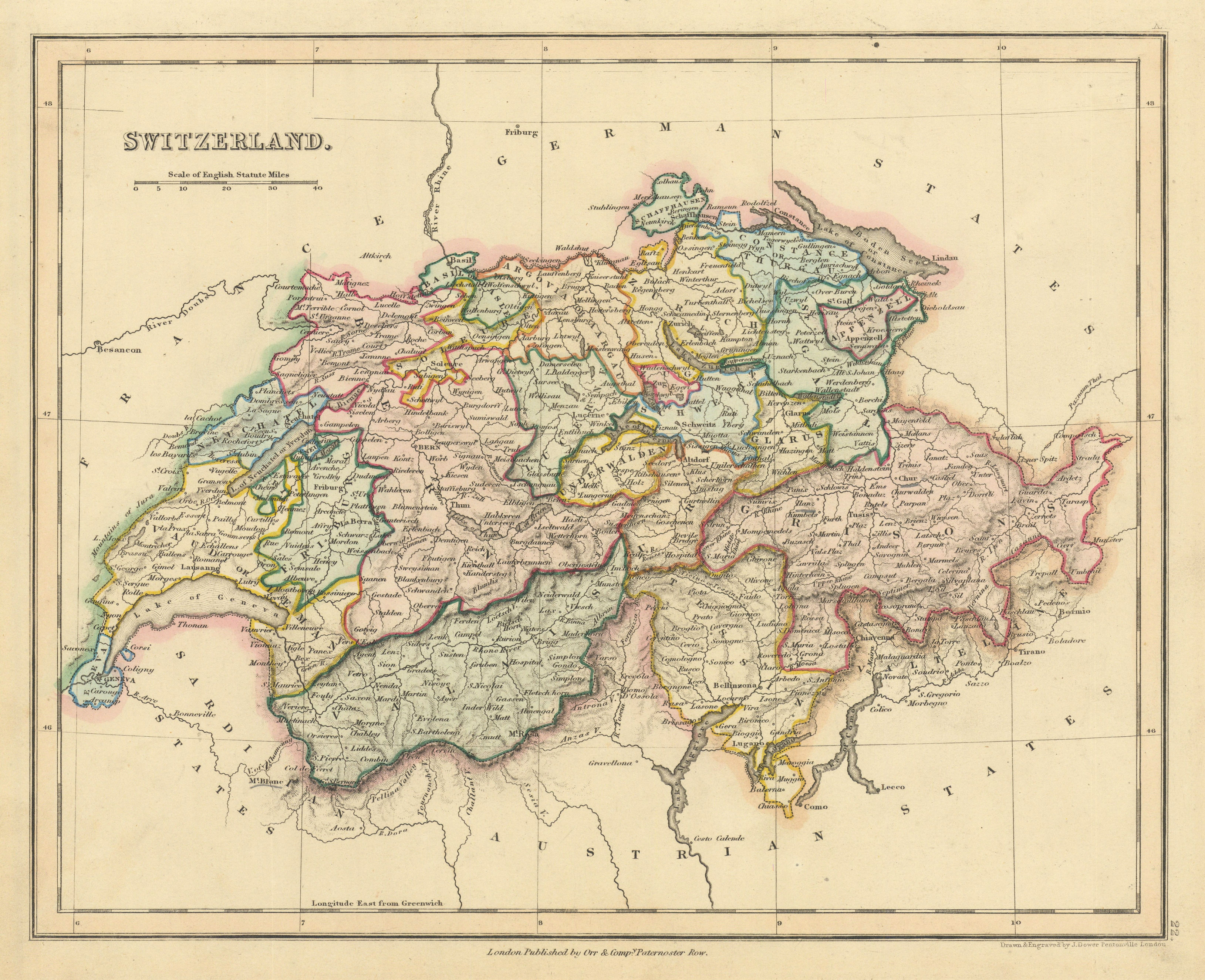
Currently, Switzerland exists in a similar form. The cantons are no longer independent states but function as the equivalent of American states. While the cantons enjoy a considerable degree of autonomy, they are significantly constrained by central authority. For instance, although the cantons have the power to determine taxes, the most important tax, VAT, is set at the federal level.
However, where it is not necessary, cantonal independence really works. For example, until 1991, some cantons did not allow women to participate in elections. For some reason, fans of Swiss democracy constantly forget about this inconvenient fact.
The neutrality that burst
Switzerland has rarely participated in wars as a country throughout its history. Swiss mercenaries usually fought on the side of other states. Switzerland itself has avoided wars since the 1500s.
For example, when the Thirty Years’ War ravaged Europe, Switzerland was only indirectly affected. The losses of European countries in this war are estimated to be up to 8 million people. Switzerland, on the other hand, dealt with an economic crisis due to disrupted trade and a series of internal uprisings.
Switzerland’s official status as a neutral country was established by the Paris Peace Treaty of 1815, signed after Napoleon’s surrender. The French occupation of the country ended with this, and this war became the last conflict in which Switzerland participated.
However, Switzerland’s neutrality is not just simple, but armed. “Simply neutral” countries like Liechtenstein, Panama, and Costa Rica do not have an army at all, while countries with “armed neutrality” have an army that can only defend the country and not participate in foreign wars.
However, the armed nature of Swiss neutrality is gradually becoming a thing of the past. Once, Switzerland had a truly large and powerful army, but now its military is being reduced and could even be completely disbanded.
Until 1995, there were 600,000 people serving in the army in the country. Then the army was reduced by a third to 400,000. Currently, the army consists of only 150,000 soldiers and reservists. In terms of percentage of the population, Switzerland now has as many soldiers as Russia, which is considered a heavily militarized country. But just 30 years ago, the army was four times larger—an absolutely unthinkable size for Europe.
Despite the fact that a mere fraction of the GDP (only 0.68%) is spent on the army, there are discussions in the country about a complete abolition of the military. Such matters in Switzerland are decided through referendums, and people are currently voting against it. And that’s a good thing because history has shown that as soon as a country disarms, that’s when a global war sneaks up on them!
Switzerland managed to avoid participating in both World Wars. The map of Europe during the Second World War looks like a bagel with a hole in the middle. The Nazi army, spread across Europe, seemingly flowed around Switzerland from both sides.
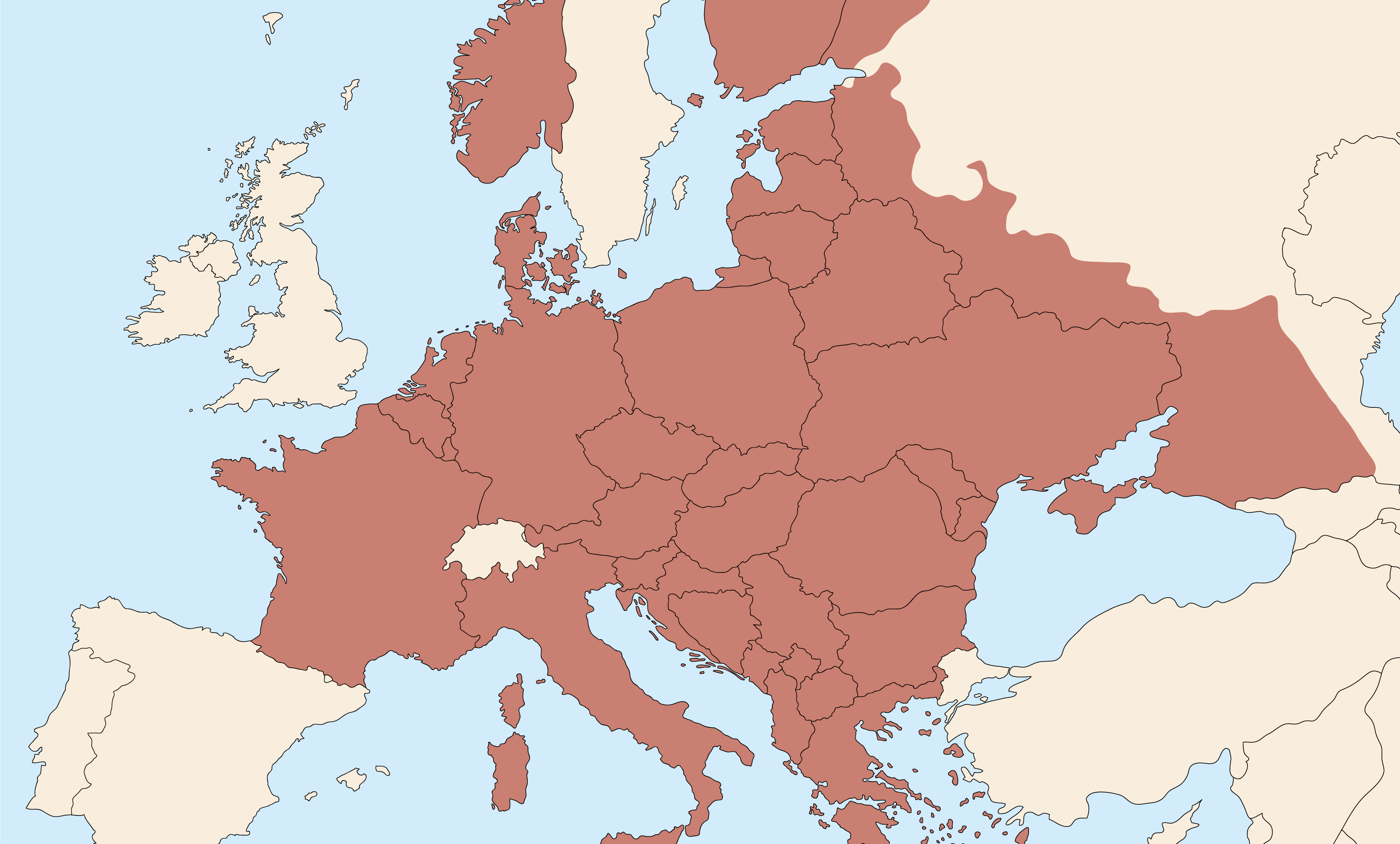
However, there was a plan to invade Switzerland called “Operation Tannenbaum.” According to the plan, Switzerland was to be squeezed from both sides: Nazi Germany would attack from the north, and fascist Italy from the south. Hitler expressed strong opinions about the Swiss, who are actually very closely related to Germans:
Preparations for the operation began immediately after the capture of France in 1940, but Hitler never dared to execute the plan. No one knows exactly why, but upon closer examination, the plan to invade Switzerland turns out to be completely insane.
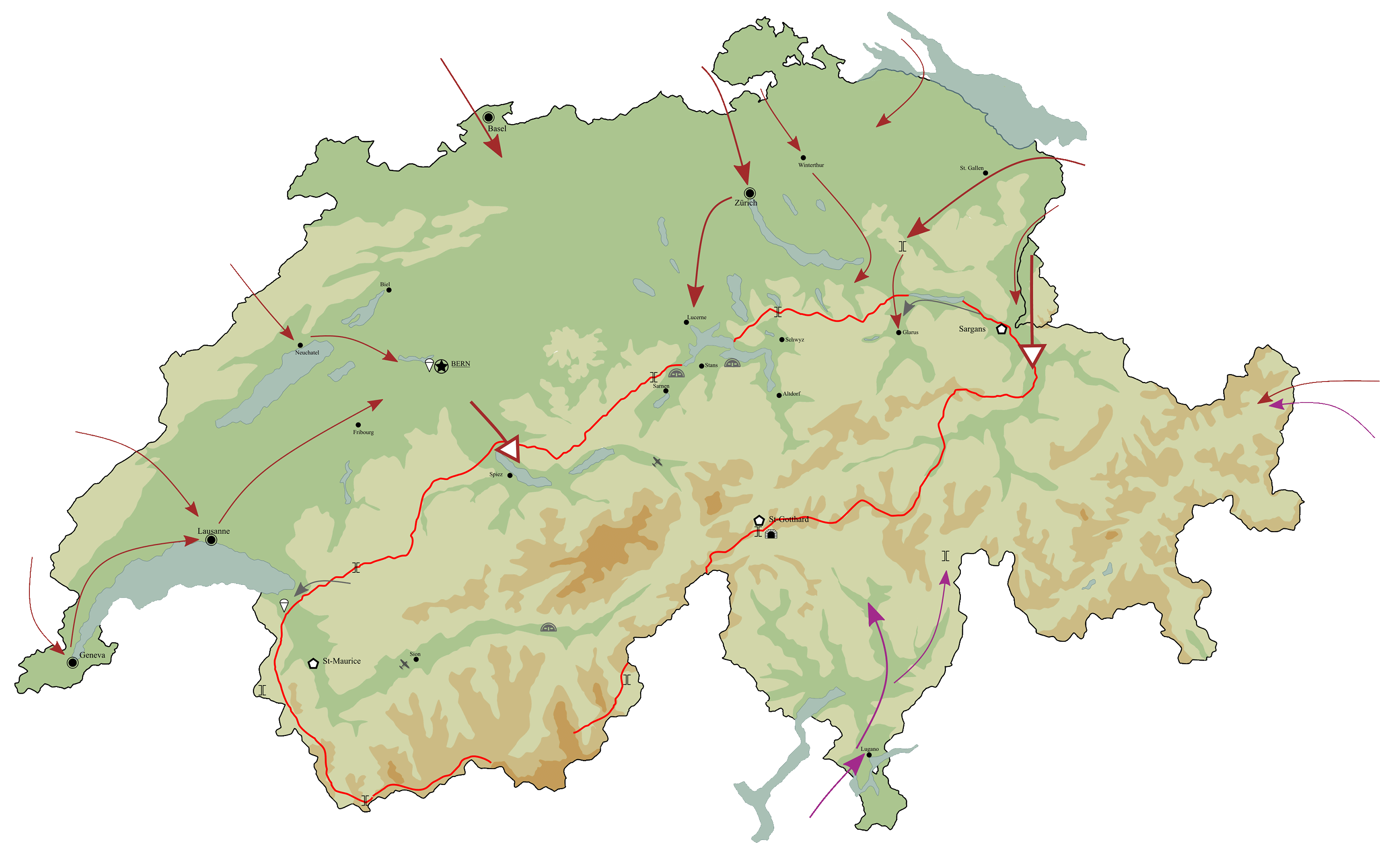
Firstly, Switzerland held Germany’s gold reserves. Throughout the war, hundreds of tons of gold passed through Swiss banks. The blood-stained wealth taken from Hitler’s victims peacefully lay in Swiss banks and was sold by the Germans for Swiss francs to purchase weapons and food. Switzerland guaranteed banking secrecy.
Secondly, Switzerland is surrounded by mountains. Within these mountains, the Swiss organized a series of fortresses with tunnels, heavy weaponry, and food supplies. Just as the British turned Gibraltar into an impregnable fortress, the Swiss fortified their entire country with these fortresses. To this day, there are dozens of tunnels carved into the mountains of Switzerland and hundreds of firing points disguised as residential houses and barns.

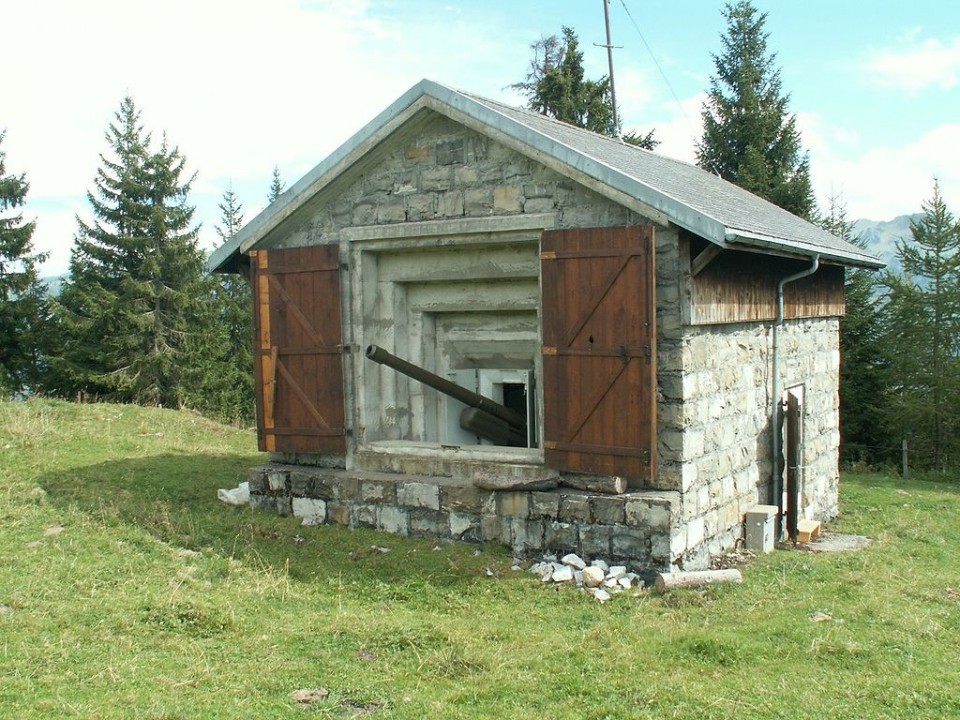
Moreover, all bridges and tunnels leading into Switzerland were mined. Hundreds of crossings over mountains and rivers could be detonated at any moment. If Hitler’s forces attempted to attack Switzerland, they would have encountered such a response that they would have been bogged down in battles for months.
It turns out that Switzerland, on the one hand, maintained neutrality and served as a trading platform for Hitler, while on the other hand, it could have given his army a tough time. There was no point in capturing this country! Thus, Switzerland emerged from World War II intact and unharmed, although the ethical aspect of this story is highly debatable.
Now, 70 years later, little remains of Switzerland’s neutrality.
When in 2014 Putin started a war with Ukraine and annexed Crimea, the European Union and the United States imposed sanctions against Russia. In response, Russia banned the import of meat and other products from Europe and America. Russians mourned the loss of cheese the most. However, Swiss cheese and chocolate remained in Russian stores because Switzerland did not join the sanctions.
But this neutrality also ended in 2022 when Russia entered the second phase of the war and attacked Kyiv. Now Switzerland is blocking the accounts of Russians just like other EU countries, and trade between the two countries has plummeted to a minimum. European sanctions have primarily hit those Russians who opposed the Putin regime and fled from the war. The sanctions have actually strengthened the Russian authorities themselves.
Now, the golden streams that used to go directly from Russia to Switzerland are flowing through the Arab Emirates. Prior to the war, Russia supplied Dubai with just over one ton of gold, but now deliveries have increased to 75 tons per year. The flow of gold from Dubai to Switzerland has also increased by the same amount.
It turns out that Russia remained steadfast, Dubai earned on commissions, and Swiss neutrality was left only in memoirs.
Banking secrecy becomes evident
The law on banking secrecy, adopted in 1934, was not specifically designed for Hitler. On the contrary, the first clients of Switzerland were Jews who were hiding their savings from the Nazis.
After the start of World War II, the countries of the anti-Hitler coalition froze German accounts and imposed sanctions against Germany. Switzerland, however, maintained its neutrality and did not impose sanctions, thus becoming a repository for Nazi gold. Approximately 80% of the Nazi gold reserves were stored in Swiss banks.
Due to the sanctions, Germany could not use dollars or pounds, so it sold gold for Swiss francs, which were then used to purchase food and weapons. This continued until the very end of the war. It was only after many years that Switzerland was compelled to return the gold to Holocaust survivors.
Then the 21st century arrived, and Swiss banking secrecy vanished as completely as its neutrality did.
After the devastating financial crisis hit the United States in 2008, President Barack Obama took serious action against American billionaires who were evading taxes in Swiss banks. Negotiations lasted for almost 10 years, and Switzerland resisted as much as it could to protect its banks. However, this small but proud country was unable to withstand the pressure from America.
In the end, Switzerland capitulated: in 2017, the country entered the program of automatic exchange of tax information. Now Swiss banks are no different from any other banks in Europe.
The only difference is that Swiss banks are considered the most corrupt in the world.
Interestingly, the banks remained as they were. However, the attitude toward banking secrecy has changed. Often and not without reason, taxes are called legalized theft since the state, under the threat of imprisonment, takes a portion of an individual’s income. Therefore, individuals have the right to do everything possible to avoid paying taxes.
This simple idea forms the basis of anonymous bank accounts. Switzerland provided people of any nationality with a haven from tax pressure in their own countries. Now, this is called “corruption,” and tax payment is portrayed as a sacred duty of citizens.
Economy and bankrupt bank
The economy of Switzerland is one of the healthiest in Europe.
Switzerland’s government debt at 40% of GDP is incomparable to Italy, which owes 145%, France with its 112%, and even Germany, which has borrowed 67% of its economy.
At the same time, the economy of Switzerland is the most complex in the world. The Economic Complexity Index shows how diverse the production is in the country and how widely its goods are used in the world. Switzerland ranks second in the world after Japan.
Switzerland produces practically everything, and its goods can be found in any corner of the planet. Watches, chocolate, pharmaceuticals, airplanes, trains and railways, machinery, and, of course, banking services — all of these bear the Swiss logo, which is a symbol of quality.
Here is a list of Swiss companies that are known to almost everyone: Rolex, Nestle, Nescafe, Nesquik, Credit Suisse, Roche, Davidoff, Lindt, Logitech, Maggi, Movenpick, Zepter, Kempinski, Omega, Patek Philippe, Swatch, Tetra Pak, Tissot.

And it’s not just because Switzerland hasn’t fought for 200 years, but also because of business freedom and an independent currency. Switzerland is not part of the Eurozone. The country’s economy is maximally independent and does not want to be associated with the European Central Bank, which has tied the whole of Europe to the euro.
The euro is convenient for making payments, but from a financial point of view, a common currency is a real disaster. Troubled countries like Greece accumulate debts that cannot be written off through devaluation of a separate Greek currency. Greece’s debts are denominated in euros and spread across all Eurozone countries.
Therefore, Switzerland uses its own currency — the Swiss franc, and is not dependent on the euro. However, the epidemic of a single currency has also affected it.
For several years, Switzerland was part of the European Currency Union, which obliged it to maintain an exchange rate: one franc equaled 0.8 euros. Everything was fine, but in 2014, the euro sharply depreciated. It became disadvantageous to exchange at the previous rate, so Switzerland withdrew from the currency union. As a result, the franc instantly rose by 15%.

Switzerland easily weathered the pandemic.
The lockdown in the country was mild and did not significantly harm the economy. In contrast, neighboring Germany went somewhat crazy by prohibiting almost everything. As a result, they had to print currency equivalent to 35% of their GDP to support the economy, leading to an inflation rate of around 7%. Switzerland printed only 15% of its GDP, resulting in inflation of just 2.8%.
Perhaps it even benefited the economy. Like everywhere in Europe, Switzerland had negative interest rates for a long time. This is a paradox of the modern credit-based economy. The central bank’s rate determines the interest on loans. The lower it is, the easier it is to repay the loan. Therefore, the central bank lowers the rate so that people take more loans and the economy grows.
But what if the interest rate is already very low, and people still don’t take out loans?
In the 21st century, the economy of Europe reached such a decline that interest rates were lowered almost to zero, but even free credits could not bring it back to growth. Therefore, rates were made negative. Loans not only became free but started to incur additional costs, while deposit accounts, on the contrary, began to charge interest for holding money!
This affected banks, not individuals. Each bank has an account with the central bank. The bank earns interest for holding money in this account, and if the bank takes a loan from the central bank, it pays interest on the loan. With negative rates, everything is reversed: banks pay interest to the central bank for holding their own money. This approach, intended to stimulate the economy, leads to the bankruptcy of banks.
European banks have been in a difficult financial position for ten years, and their bankruptcy was only a matter of time. The first of the giants to succumb was Credit Suisse, a renowned Swiss bank founded in 1856. It went bankrupt and was acquired by UBS bank in 2023.
Poverty Swiss-style
Despite the highest standard of living, Switzerland is not a paradise. The main problem in the country is incredibly expensive housing. Just like everywhere else.
Negative interest rates have had a significant impact on the real estate market. When loans are easily accessible, what do people prioritize? Of course, apartments. However, there is nothing good about this, as artificial demand causes prices to skyrocket, creating a bubble. Rent in Switzerland has become simply unaffordable. A one-bedroom apartment in the center of Geneva costs $2500 per month!
According to statistics, only 40% of Swiss people own their homes. This is the lowest rate not only in Europe but in the whole world. Even an average salary of 7000 dollars doesn’t help Swiss people escape the rental curse. If you divide this salary by the cost of an apartment, it turns out that the price per square meter of housing in Switzerland is a third of the annual income!
These are unimaginable figures even for a wealthy country. The Swiss dream of a cozy house in the Alps is unattainable for most Swiss people. Only every third family in Switzerland has enough savings to collectively buy a modest apartment. Therefore, 58% of the country’s population rents housing.
Adding to the skyrocketing prices is an excessive level of migration: 30% of Switzerland’s population consists of newcomers who also need somewhere to live. Because of them, prices are even higher. The author personally rented a hotel room with a shared toilet for $110 per night. Only hostels were cheaper in Zurich.
So, in Switzerland, a unique type of poverty has emerged.
If 50 years ago, Swiss poor people lived in dilapidated rural houses, relied on food from their gardens, and washed laundry in the river, now they receive $2000 per month, live in apartments, have smartphones, and huge televisions... and still remain poor!
According to official statistics, 15% of working families and 22% of retired families in Switzerland live below the poverty line.
Interestingly, this poverty line is set at $2800 per month. Such poverty! But that doesn’t change anything. These funds are only enough for housing, food, and taxes. People cannot afford to pay for dental care or celebrate the New Year due to exorbitant prices in the country.
It turns out to be a paradox. A person works, earns several thousand dollars per month, and still remains poor. In that case, how is a poor Swiss person better off than a poor Pakistani?
The thing is, poverty is a relative concept. Against the backdrop of Geneva’s sparkling shop windows, it’s very easy to feel disadvantaged. Poverty in “first-world” countries differs from African poverty only in the level of physical comfort, but psychologically, it is better to be poor in Africa: it is not as shameful.
Therefore, poverty in Switzerland is completely invisible. The cities are exceptionally clean, the houses incredibly well-maintained, and the stores sell expensive clothing brands. However, poverty does exist, and it is high. It’s just that poverty in Switzerland is shameful. Being poor in the wealthiest country in the world is ten times more humiliating than being poor in a destitute country.
Swiss poor people feel ashamed and hide their situation even from social assistance services. Often, these individuals fall into deep depression, which leads to job loss and creates a vicious cycle.
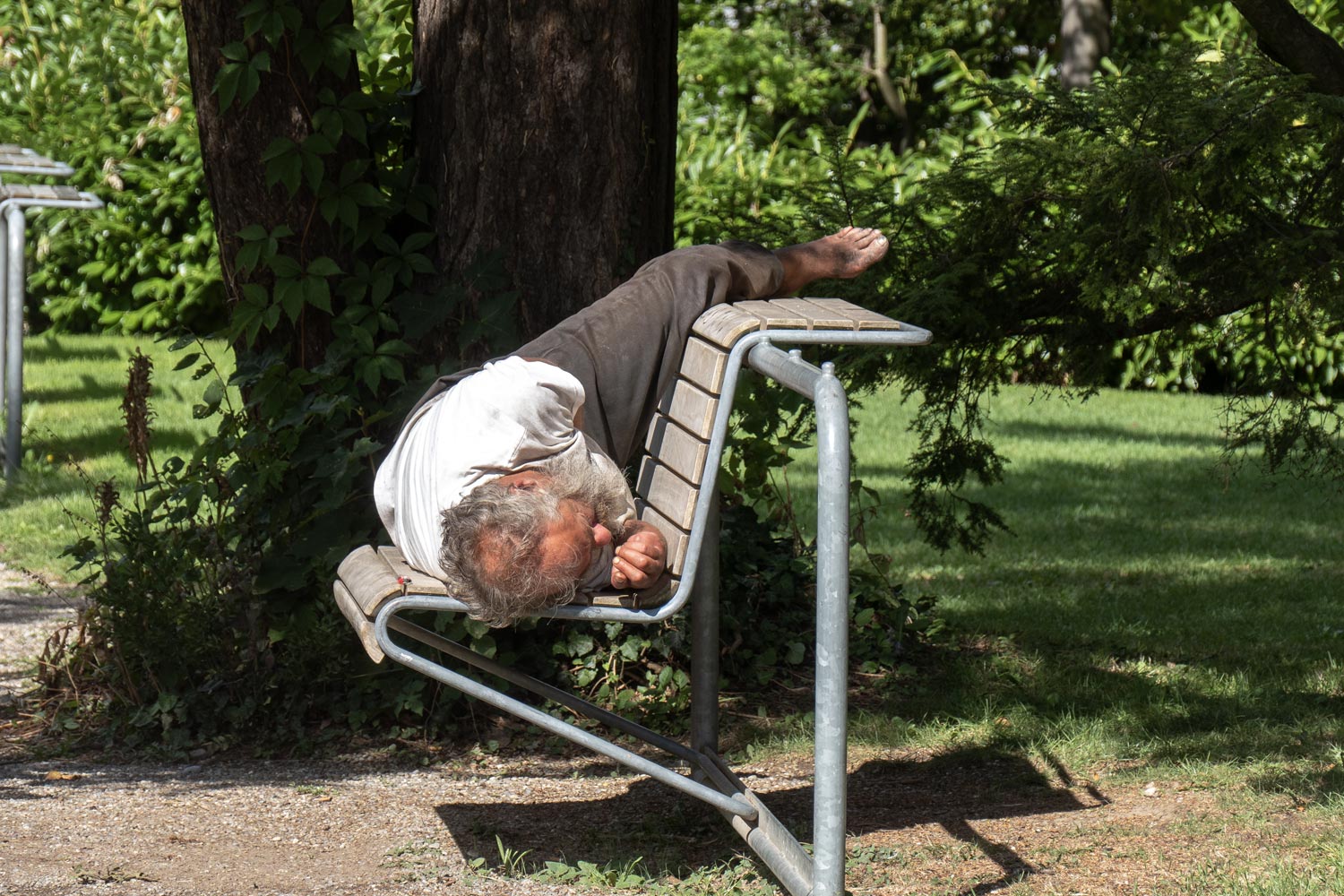
Alright, enough negative.
Design
How can I not talk about Swiss design? After all, I am a sort of designer myself.
Switzerland is the birthplace of the famous Helvetica font. It is named after this country, which was once called the Helvetic Republic. The font gained particular popularity after it was included in the Mac OS system. Arial became the Windows version of the font — everyone surely knows it. Despite its simplicity, the font is highly expressive and is used for posters.
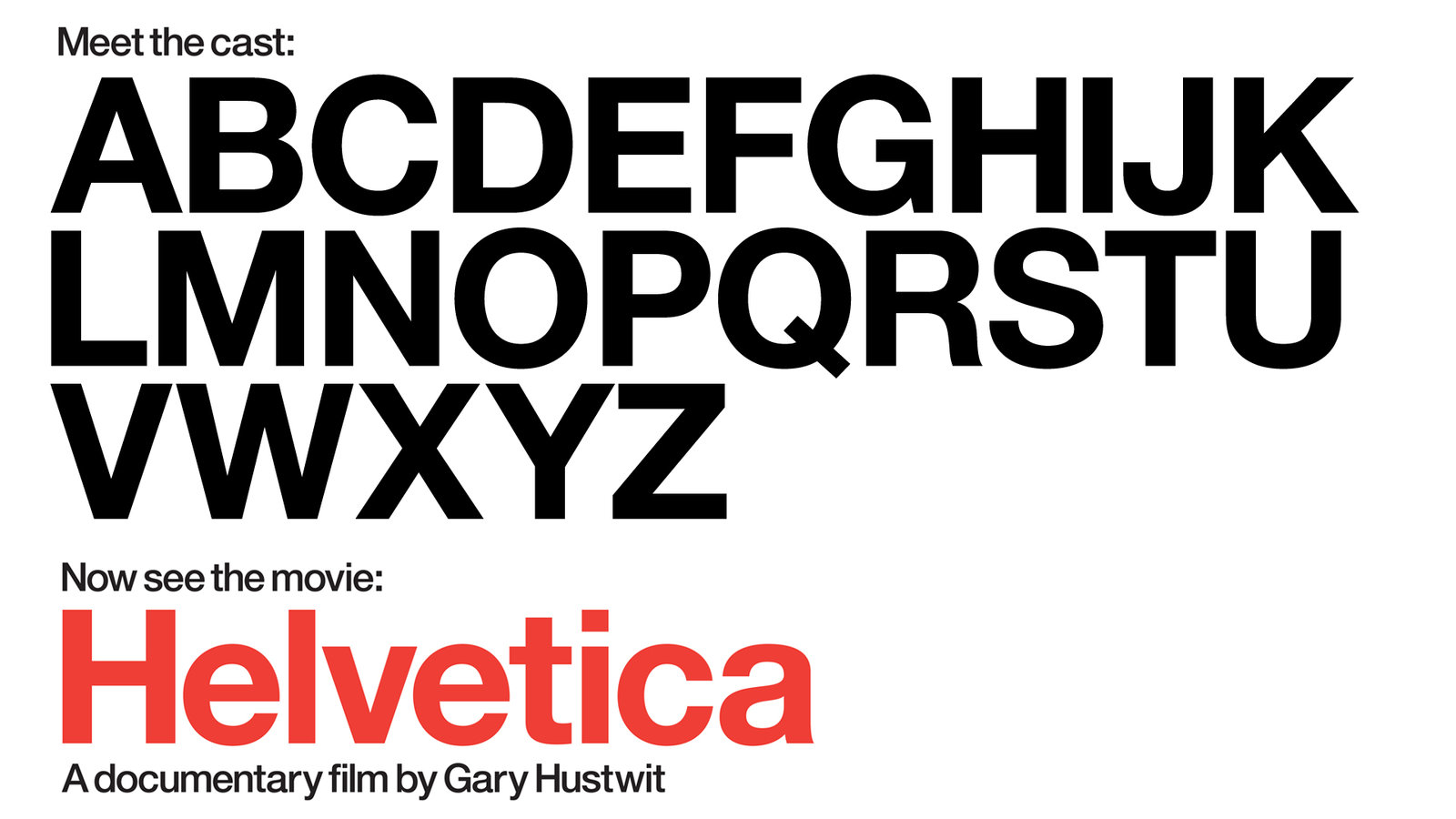
Around the same time, in the mid-20th century, Switzerland became the birthplace of the modern poster itself.
If previously posters were more often drawn, now they began to be “constructed” using a modular grid system. Two renowned Swiss designers, Max Bill and Emil Ruder, developed a convenient layout system for paper sheets that allowed for the quick and simple creation of densely packed information pages.

Half a century later, the Swiss design system became the base for web design.

In Switzerland, practical design has become a national idea, and the white cross on a red background has turned into a symbol of quality. Swiss products, from knives and backpacks to weapons, are of incredible quality, and poster layout is even used on the cover of passports.
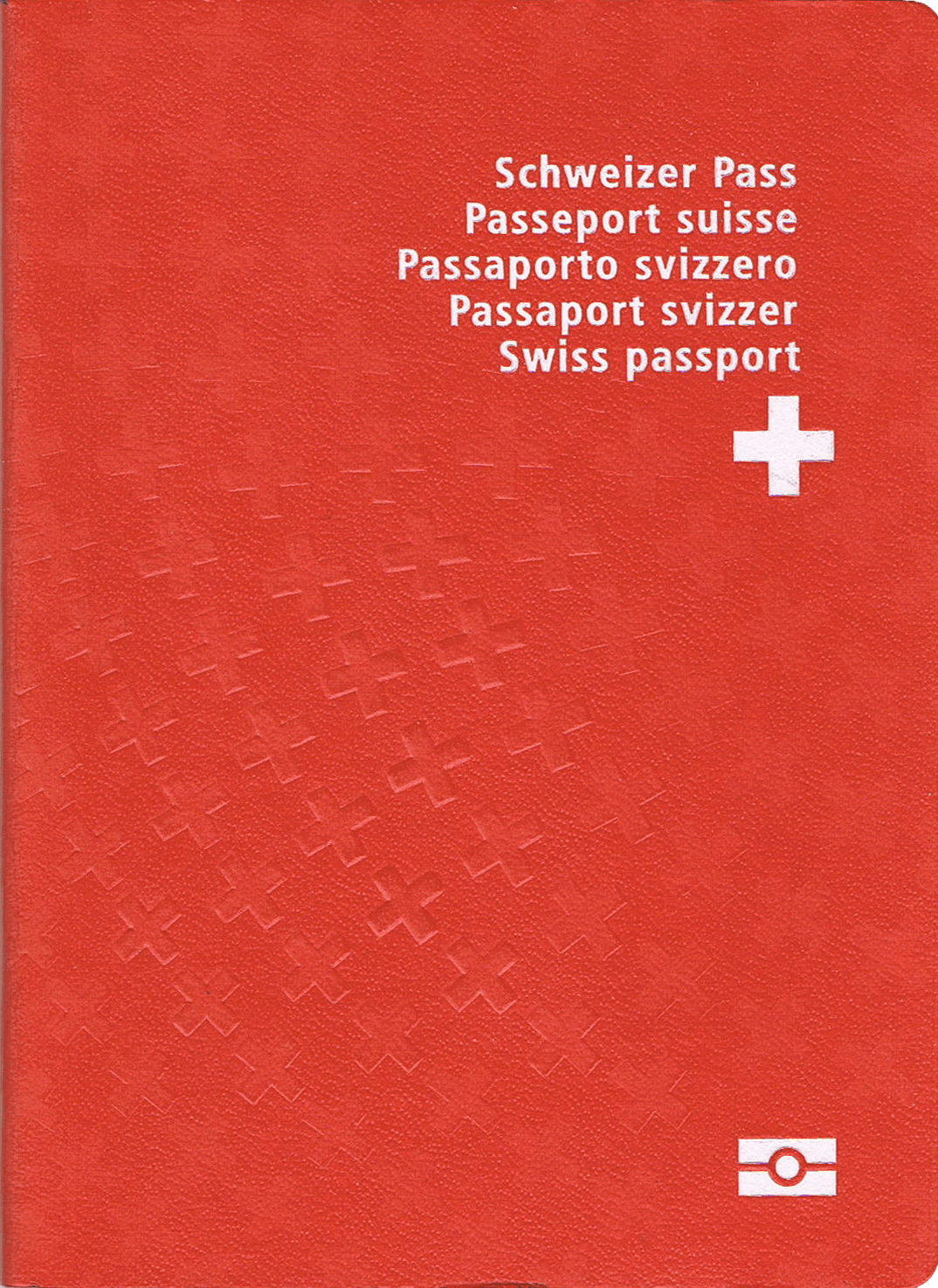
Well, that’s it. Let’s go to Geneva!


